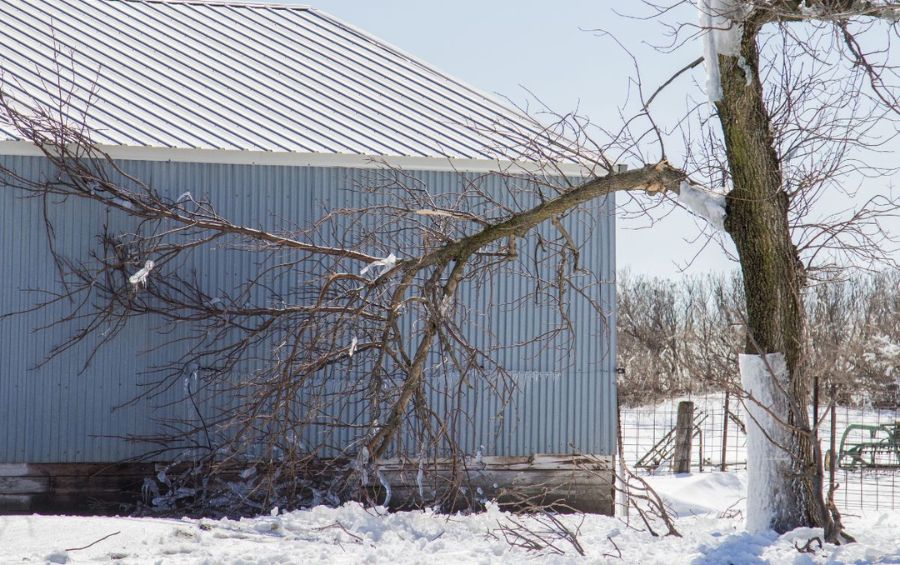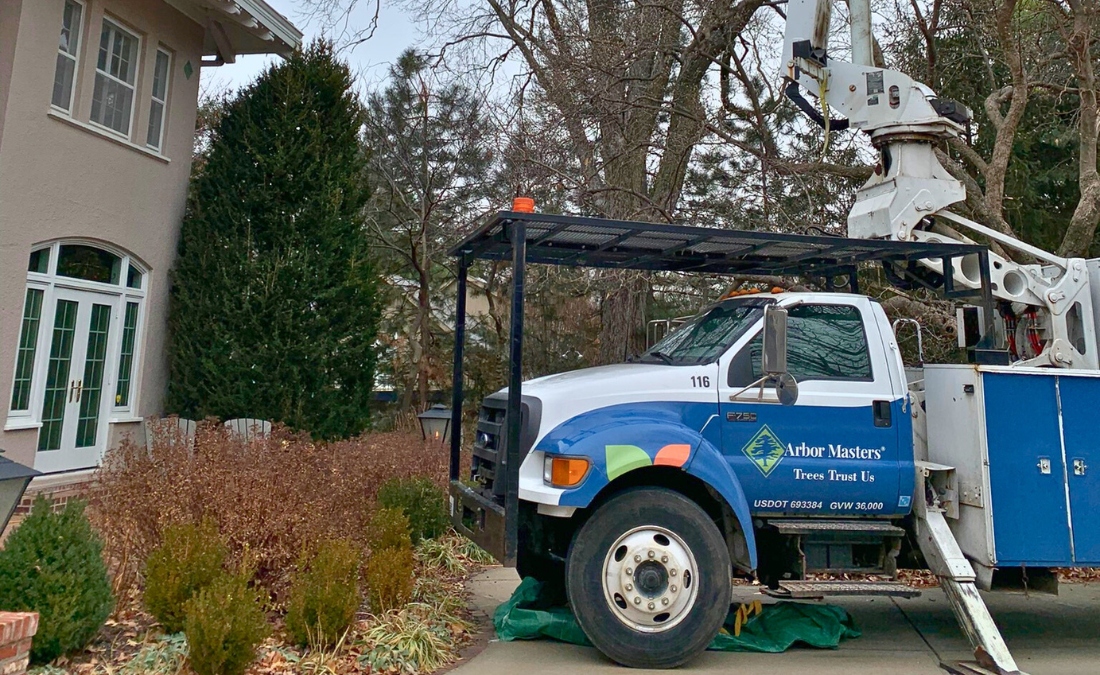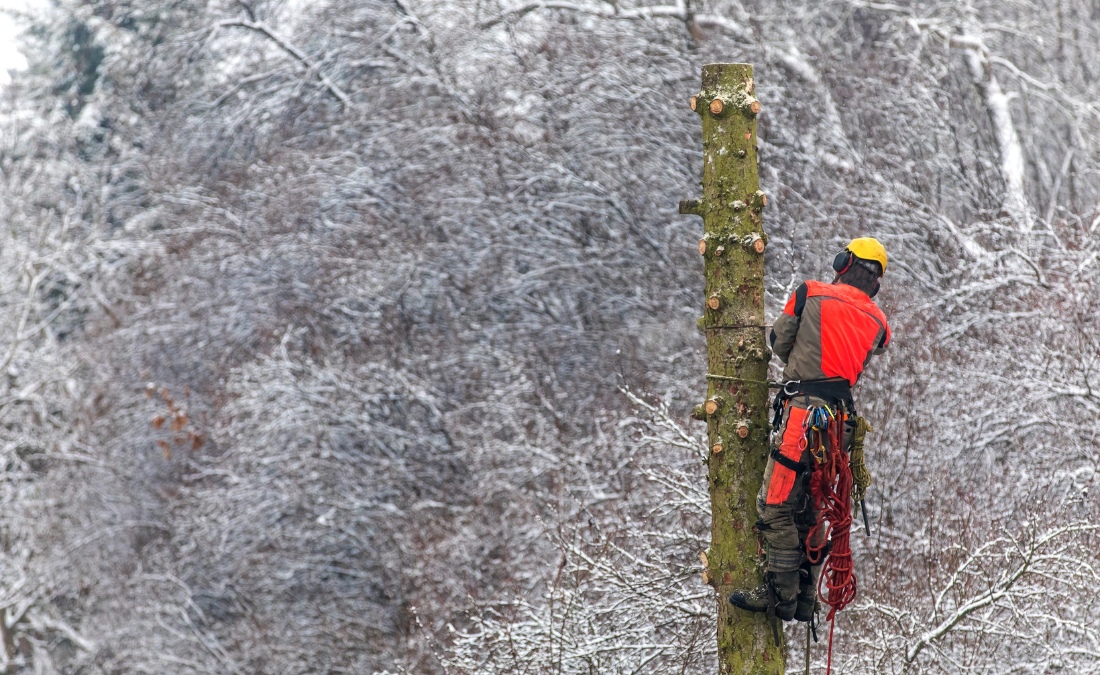6 Signs Your Shawnee Tree Needs Pruning After a Storm

Wondering if your tree needs pruning after a storm? Learn 6 signs of damage and how Arbor Masters can quickly restore your tree’s health and safety.
Storms in Shawnee have a reputation for leaving behind more than snow, ice, and windblown debris – they can also cause subtle or serious damage to your trees. While some issues, like hanging branches, are obvious, others are harder to spot but just as important to address. Knowing the signs that your tree needs pruning after a storm can prevent hazards, protect your property, and keep your trees healthy.
Key Takeaways:
- Storm-damaged trees can present serious safety hazards, such as broken or hanging branches that could fall at any moment.
- Signs like cracked bark, sunken cankers, or heavy leaning indicate internal damage that requires professional evaluation to prevent further harm.
- Exposed deadwood and haphazard growth can weaken the tree’s structure, making it more susceptible to future storm damage.
- After a storm, always inspect trees from a safe distance, document the damage, and contact a Certified Arborist for professional assessment and care.
- Avoid DIY pruning and climbing storm-damaged trees to reduce the risk of injury or further harm to your trees and property.

Signs of Post-Storm Tree Damage
Storms can wreak havoc on trees, and recognizing damage early is important for maintaining safety and tree health. Here are six common signs your tree might need pruning after a storm in Shawnee, Kansas.
1. Broken or Hanging Branches
Broken or hanging branches are often the most obvious sign of storm damage. These branches may be partially detached, caught in the canopy, or dangling precariously over your property.
Why It Matters
Broken branches are hazardous – they can fall unexpectedly, causing injury or damage to structures, vehicles, or fences. Additionally, open wounds where branches break off can expose the tree to pests and diseases come spring.
What to Do
Avoid standing beneath broken or hanging branches, and do not attempt to remove them yourself, especially if they are large or high up. A Certified Arborist can safely prune the damaged areas without further harming the tree.
2. Split or Cracked Bark
Cracks or splits in the bark can occur during storms, especially in high winds or when heavy branches are bent. These splits may not be immediately visible but can compromise the tree’s structural integrity.
Why It Matters
Cracked bark can lead to long-term weakening of the tree, as the exposed wood is vulnerable to rot, insects, and fungi. Over time, these cracks can expand, potentially leading to trunk or branch failure.
What to Do
Carefully inspect your tree, focusing on branch unions and areas along the trunk. If you notice cracks, contact a professional arborist who can evaluate the damage and recommend pruning or reinforcement with tree cabling or bracing.
3. Sunken Bark or Cankers
Sunken areas in the bark or visible cankers – dead, discolored patches – are signs that a tree is struggling, possibly worsened by storm stress.
Why It Matters
Sunken bark or cankers are indicators of internal decay or disease. After a storm, weakened areas like these are more susceptible to further damage, making the tree unsafe or less likely to recover.
What to Do
If you spot sunken bark or cankers, don’t ignore them. A Certified Arborist can assess the extent of the damage and recommend whether pruning or more extensive treatment is necessary to save the tree.
4. Heavy Leaning
A tree that begins leaning after a storm often signals significant root or trunk damage. While some trees naturally grow at an angle, sudden or increased leaning is a red flag.
Why It Matters
Leaning trees are at high risk of falling, especially during future storms. This can pose serious danger to nearby structures, power lines, or people.
What to Do
Examine the base of the tree for signs of disturbed soil, exposed roots, or cracks in the ground. If the lean seems severe or sudden, contact an arborist immediately to determine whether the tree can be saved or if hazardous tree removal is the safest option.
5. Exposed Deadwood
Storms can reveal deadwood – branches that are already dead or dying – by stripping away leaves in the canopy, making these areas more visible.
Why It Matters
Deadwood is inherently weak and poses a safety hazard because it can fail at any moment. During or after a storm, these branches are more likely to break and fall, endangering people, property, and other parts of the tree.
What to Do
Look for branches that lack live foliage or new buds, have loose or peeling bark, or a stubby appearance. Addressing deadwood through professional pruning is essential for maintaining safety and ensuring the structural integrity of the rest of the tree. Removing deadwood also helps the tree direct its energy toward healthy growth.
6. Haphazard Growth
Storms can damage trees unevenly, resulting in misshapen or haphazard growth patterns. Branches may break asymmetrically, leaving the tree lopsided.
Why It Matters
Uneven growth can strain certain parts of the tree, making it less stable over time. It can also make the tree more susceptible to wind damage in future storms.
What to Do
Professional pruning can help restore balance to the tree’s structure, promoting even growth and reducing the risk of future damage.

What You Should (and Should Not) Do After a Storm
Once the storm has passed, your priority should always be safety. Here’s what you should – and shouldn’t – do to protect your trees and property:
- Do Inspect from a Safe Distance: Begin by visually examining your trees for obvious signs of damage. Stay a safe distance from potentially unstable areas to avoid injury from falling debris.
- Do Document the Damage: Take clear photos of any storm-related tree damage. This is particularly important if fallen branches or trees have caused damage to your home, fence, or other property, as it may be required for insurance claims.
- Do Call a Certified Arborist: Reach out to a Certified Arborist as soon as possible. They have the expertise and equipment to handle storm-damaged trees safely, whether it involves pruning dangerous branches, stabilizing a tree, or recommending removal when necessary.
- Do Not Attempt DIY Pruning: Pruning large or storm-damaged branches might seem like a quick fix, but it’s risky without proper tools, training, and safety measures. Incorrect pruning can also harm the tree further.
- Do Not Climb Storm-Damaged Trees: Climbing a damaged tree is extremely dangerous, as unstable branches or structural issues could lead to sudden failure. Leave this task to professionals equipped to manage hazardous situations.
- Do Not Ignore “Minor” Damage: Even seemingly small issues, like cracks or dead branches, can worsen over time. Addressing these problems as soon as possible prevents them from becoming more serious hazards down the line.
Don’t Wait – Shawnee’s Storm-Damaged Tree Experts Are Here to Help
After a storm, damaged trees can pose safety risks and require expert care to recover. At Arbor Masters, we specialize in assessing and addressing storm-related tree damage in Shawnee. Our team of Certified Arborists provides professional pruning, safe removal, and expert advice to keep your trees healthy and your property safe.
Don’t wait until the next storm causes more damage. Call Arbor Masters today at 913-441-8888 for a thorough post-storm tree evaluation and other trusted winter tree care tips. We provide 24/7 emergency services to address storm-damaged trees quickly and safely, ensuring your property is always protected.

Get the latest local news, tree care tips, special offers, and company updates directly to your inbox! It's easy to subscribe and there's no spam - we promise.
"*" indicates required fields





